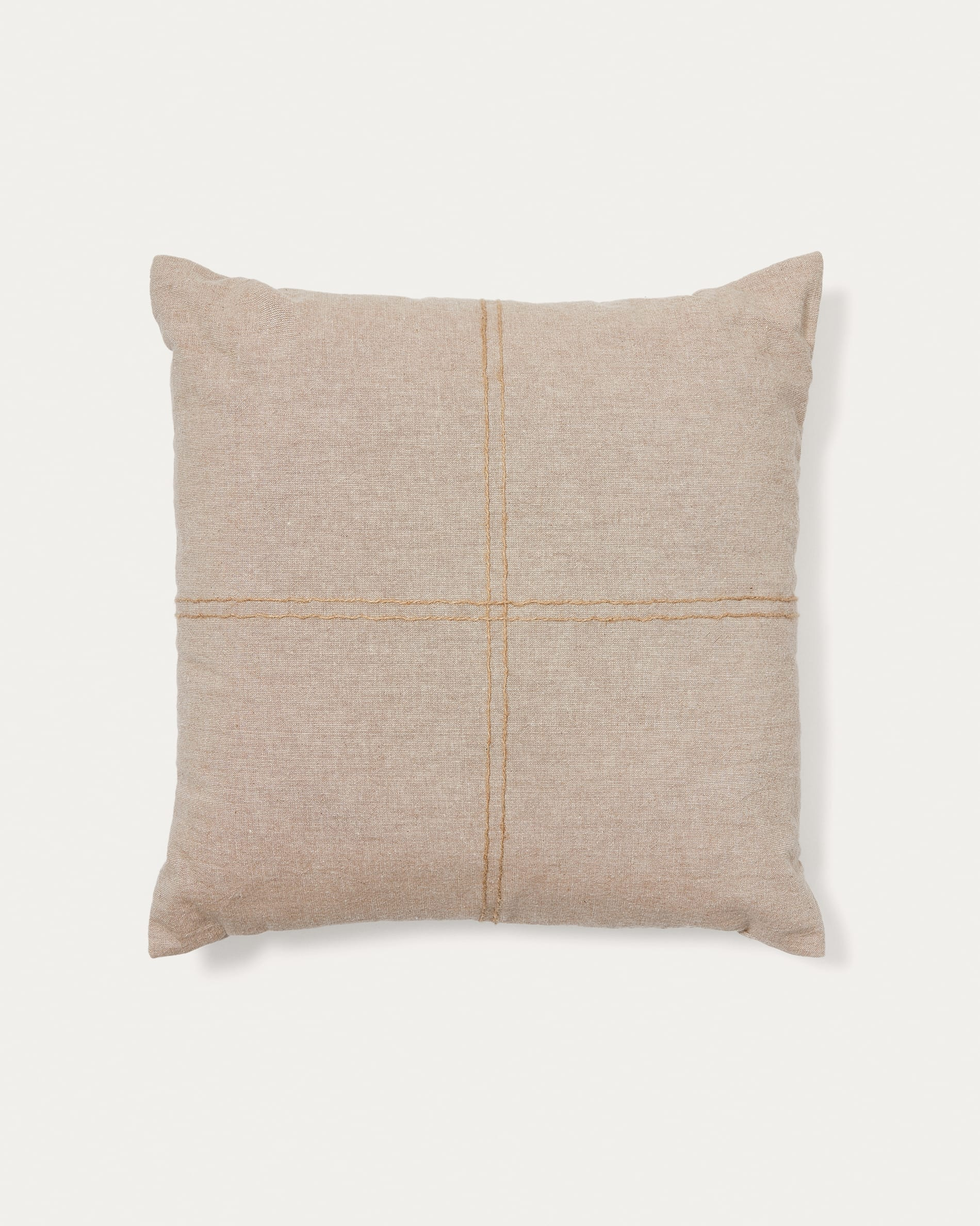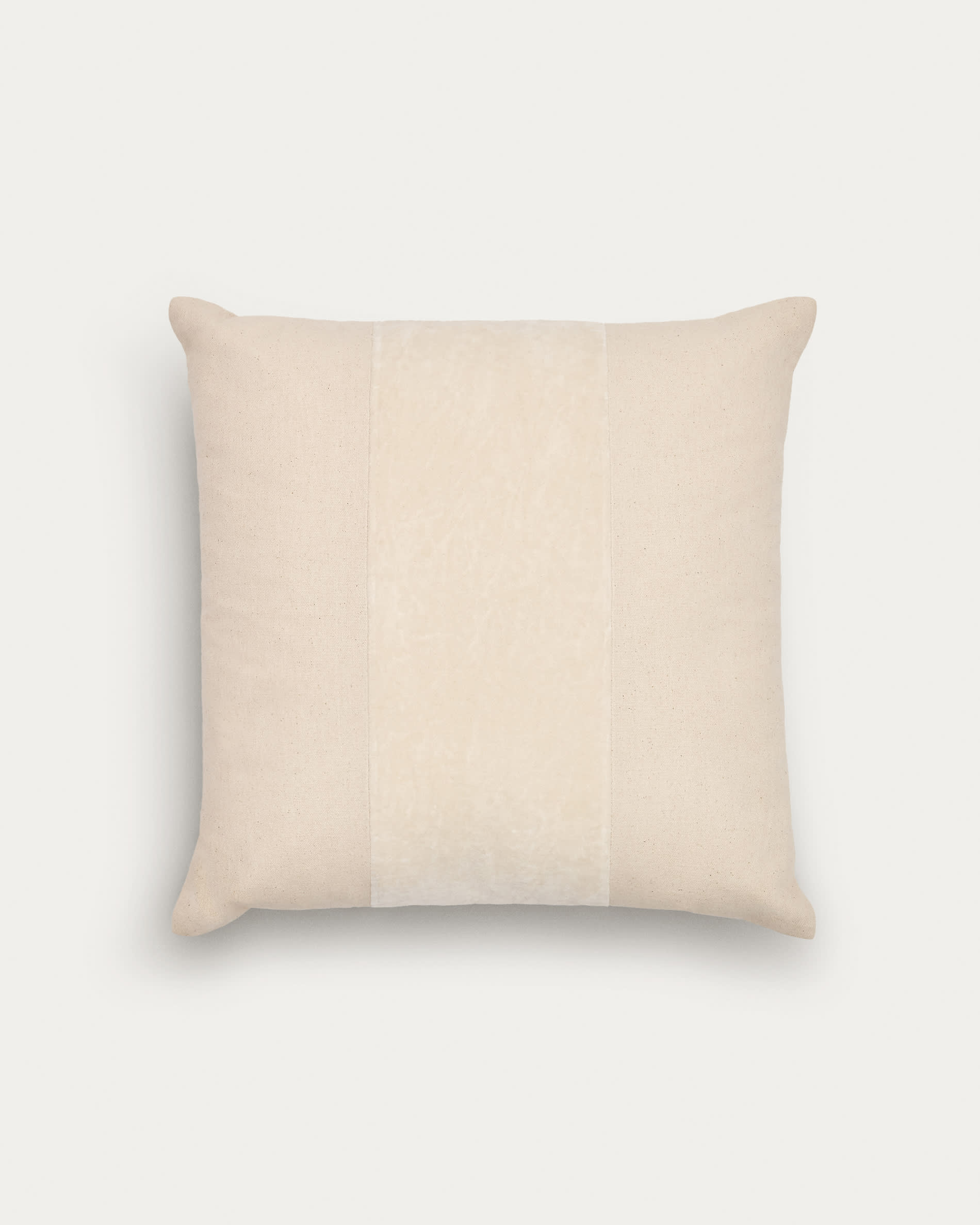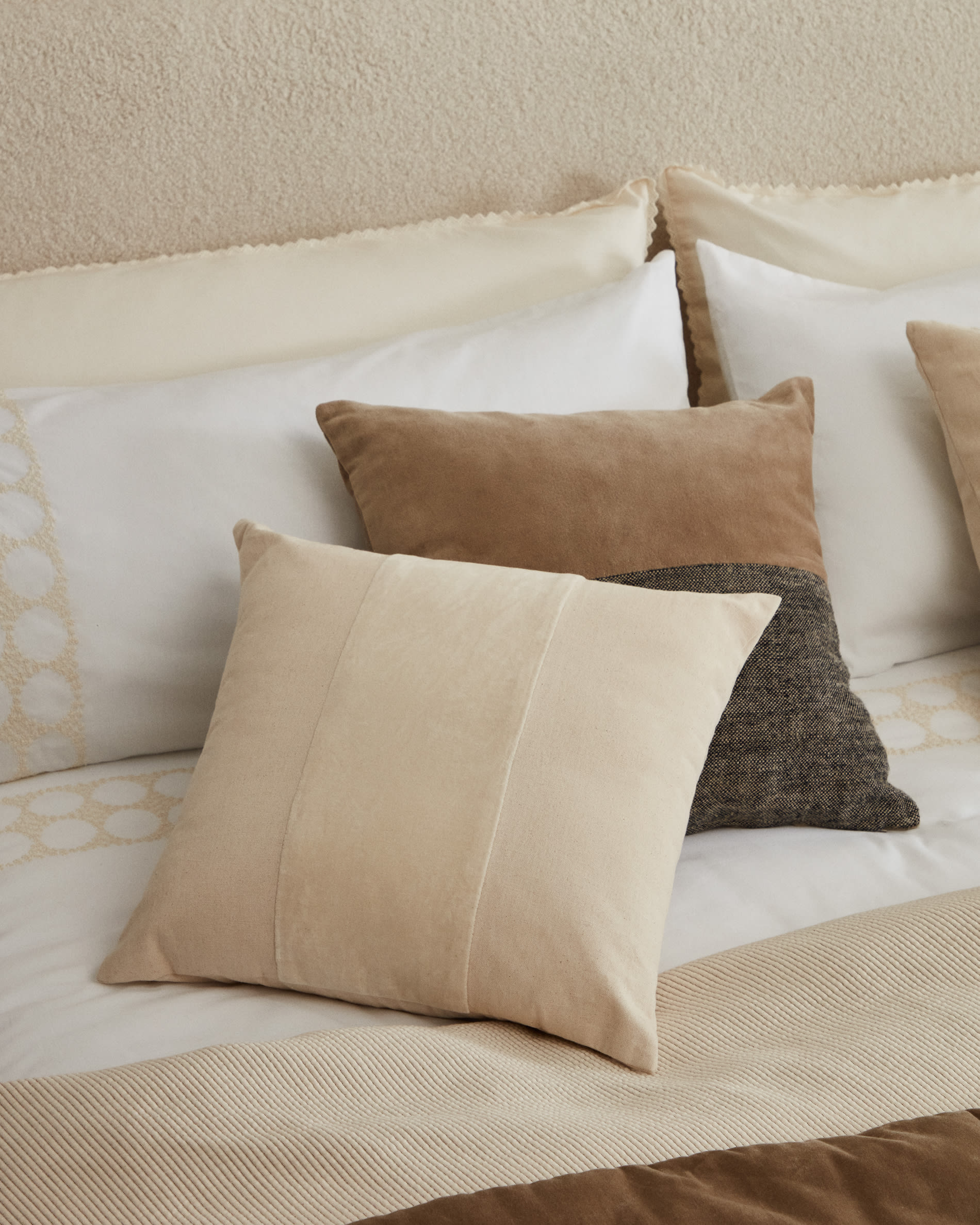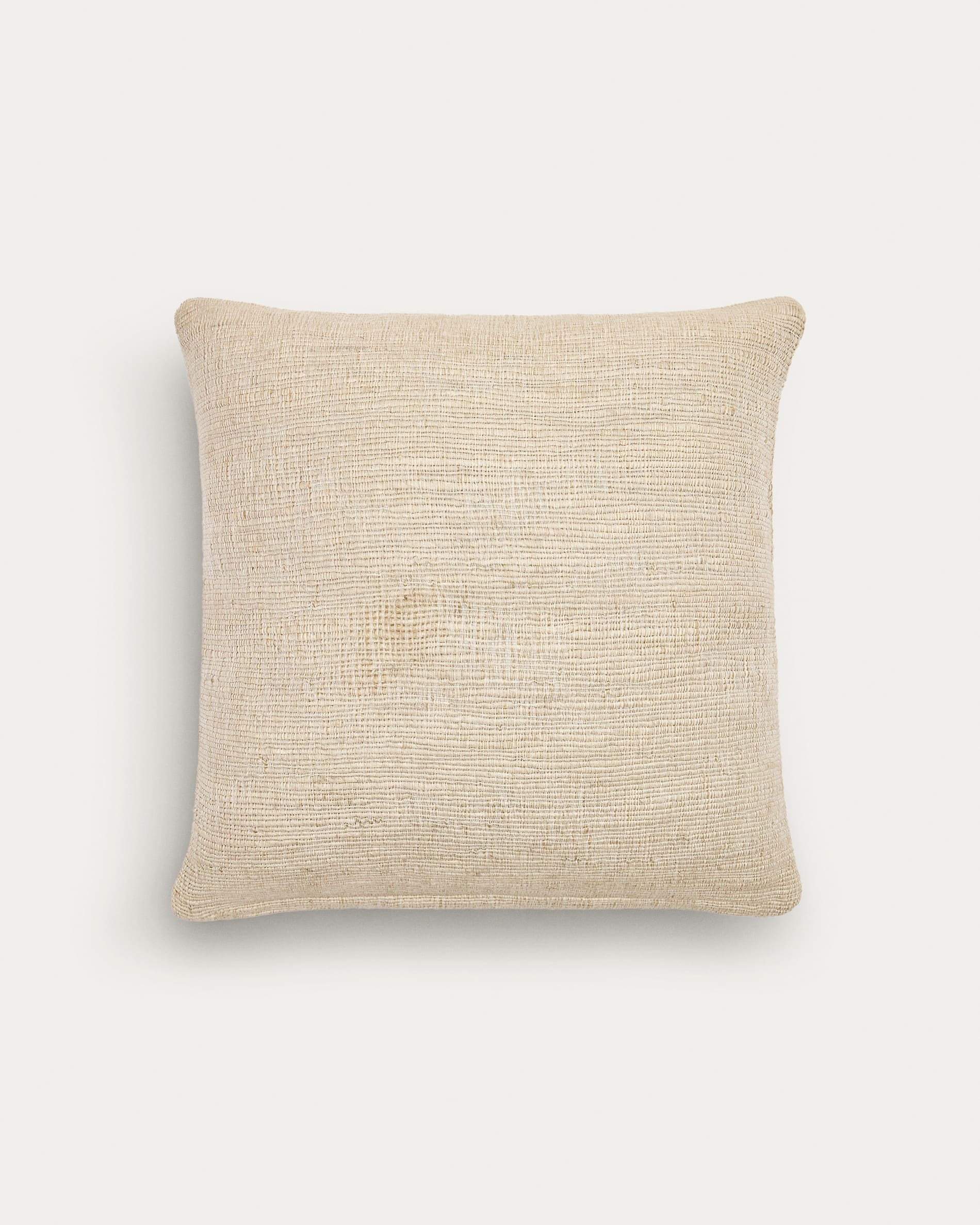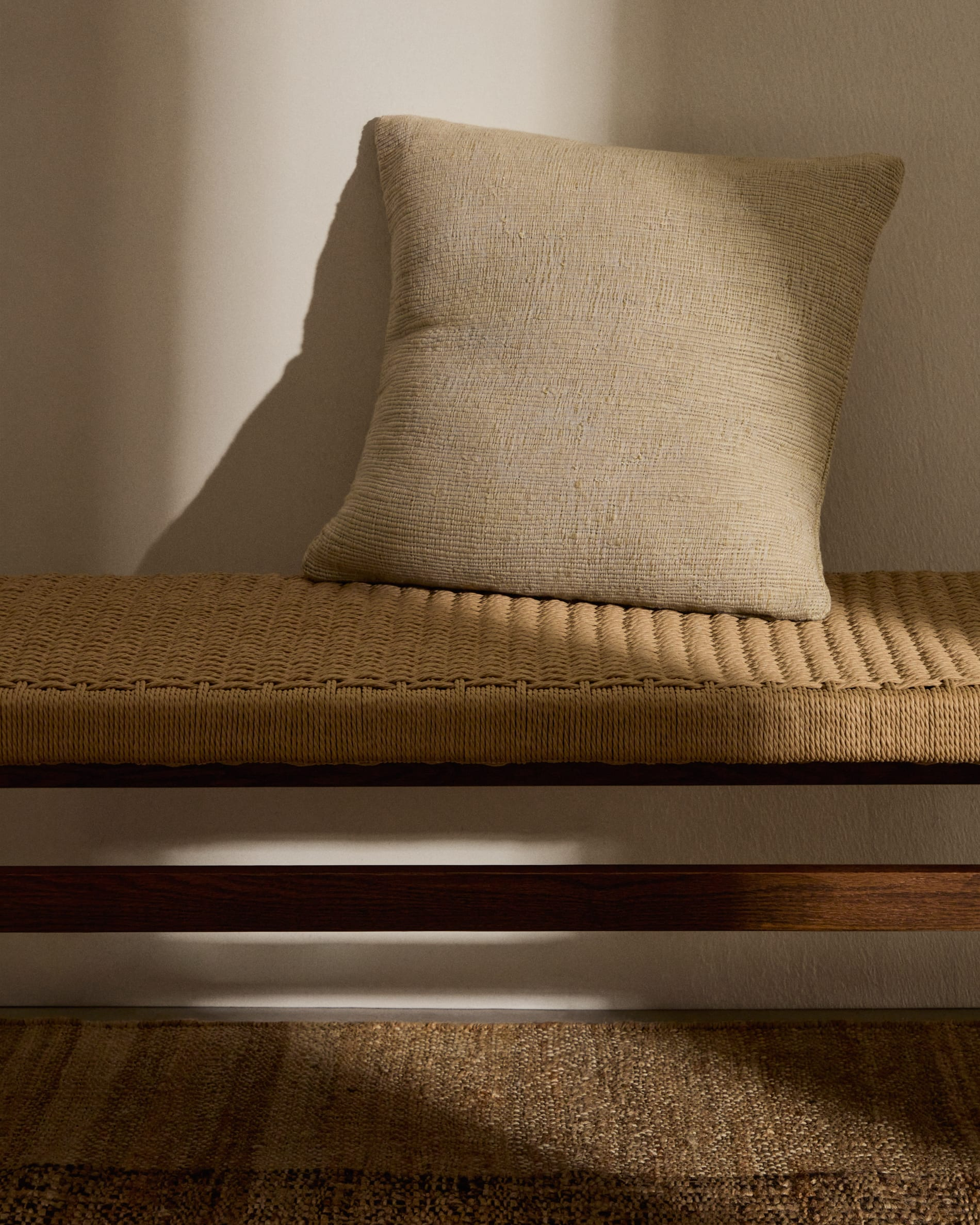- Home
- Japandi Cushions
Japandi Cushions
Shop Japandi Cushions for Serene Home Decor
Japandi cushions merge the best of Scandinavian functionality and Japanese minimalism. They balance simplicity with warmth, creating calm interiors. This hybrid style focuses on harmony, natural textures, and quiet elegance.
Scandinavian And Japanese Design Synergy
Scandinavian design brings organic warmth through light woods and soft textures. Japanese minimalism contributes clean lines and intentional simplicity. Together, they create furniture that feels both grounded and uplifting. This blend satisfies modern cravings for balanced, purposeful living spaces.
Natural Materials In Japandi Cushions
These cushions prioritize eco-friendly fabrics that feel luxurious yet unpretentious. Natural fibers like linen and organic cotton dominate, offering tactile pleasure without environmental compromise.
Linen And Organic Cotton Benefits
Linen cushions provide breathability and a subtly textured finish. Organic cotton options deliver softness with sustainability. Both materials age gracefully, developing character while maintaining comfort.
Additional Natural Textiles
- Wool blends for winter warmth
- Hemp fabric for durability
- Bamboo-derived fibers for moisture control
Minimalist Design And Nature-Inspired Patterns
Patterns take cues from natural environments, featuring subdued botanical prints or geometric shapes. The goal is subtle visual interest without overwhelming the senses.
Color Palette Philosophy
Base tones include warm whites, soft grays, and earthy beiges. Accent colors appear as muted sage, terracotta, or indigo. This palette mimics nature’s subdued beauty while promoting visual relaxation.
Pattern Subtlety
- Asymmetrical leaf motifs
- Abstract mountain silhouettes
- Subtle wave textures
Creating Serene Interior Spaces
These cushions transform rooms by layering textures without chaos. Strategic placement turns bare corners into inviting retreats through calculated softness and organic contrast.
Spatial Harmony Through Layering
Combine velvet and linen cushions for textural balance. Use graduated sizes (45x45cm, 30x50cm) to create dimension. Maintain 2-3 dominant tones per arrangement to preserve tranquility.
Functional Arrangements
Employ larger rectangular cushions (50x90cm) as statement pieces. Smaller 40x60cm versions work for dynamic rotations. Prioritize washable covers for practicality without sacrificing aesthetics.
Selecting Perfect Japandi Cushions
Focus on craftsmanship over trendiness. Seek artisanal details like hand-embroidered edges or plant-dyed fabrics to add storytelling to your decor.
Sustainable Production Matters
Check for certifications like OEKO-TEX or Global Organic Textile Standard. Ethically produced cushions often use low-impact dyes and support traditional weaving techniques.
Seasonal Adaptability
Store summer-weight linen cushions for heavier wool blends in colder months. This practice extends product lifespan while refreshing your space seasonally – a core Japandi principle of mindful consumption.
What are Japandi cushions?
Japandi cushions embody a design philosophy that merges Scandinavian simplicity with Japanese minimalism, creating functional yet serene accents for modern interiors. This hybrid style prioritizes balance, using natural materials like linen and organic cotton to evoke warmth while maintaining clean, uncluttered aesthetics. Unlike industrial or rustic themes, Japandi focuses on harmony between two distinct cultural influences: the hygge-inspired comfort of Nordic design and the wabi-sabi appreciation for organic imperfection in Japanese tradition.
These cushions achieve tranquility through deliberate choices. Natural fibers like flax and untreated cotton form their base, offering tactile texture while remaining breathable and sustainable. Color palettes blend muted Scandinavian whites and grays with earthy Japanese tones—think soft oatmeal, weathered sand, or moss green—to create grounding visual pauses in any space. Patterns emerge subtly: whisper-thin stripes echo Zen calligraphy strokes, while tonal gradients mimic weathered stone. The result? Textiles that feel both intentional and effortless, avoiding visual fatigue.
- Natural materials: Linen, organic cotton, and wool create breathable, tactile surfaces that age gracefully.
- Calm color palette: Layers of ivory, charcoal, and terracotta foster meditative calm through controlled chromatic restraint.
- Quality over quantity: Each cushion serves dual purpose—textural contrast and functional support—without decorative excess.
- Simple patterns: Subtle organic motifs or tonal gradients reference nature without literal representation, maintaining minimalist integrity.
By avoiding synthetic textures and bold patterns, Japandi cushions become spatial anchors rather than focal points. Their quiet sophistication transforms modern interiors into restorative sanctuaries, proving that comfort and minimalism can coexist when rooted in nature’s quiet elegance.
How to choose your Japandi cushions
Focusing on materials and textures
Japandi cushions thrive on natural materials that enhance tactile experience while maintaining minimalist aesthetics. Prioritize linen for its organic, breathable quality—this fabric ages beautifully, embodying Wabi-Sabi's beauty in imperfection. Organic cotton adds soft versatility for everyday use. Wool and bouclé bring hygge-inspired coziness through textured surfaces, while matte velvet in warm gray or oatmeal introduces subtle luxury. Pair a linen cushion with a bouclé throw for sensory contrast that balances Japandi’s simplicity and warmth.
| Material | Texture & Feel | Japandi Aesthetic Contribution | Best For |
|---|---|---|---|
| Linen | Crisp and breathable | Adds a raw, natural feel. Perfect for a wabi-sabi touch. | Creating a light and airy feel |
| Cotton | Soft and versatile | Provides a clean, minimalist base. Easy to layer. | Everyday use and versatility |
| Wool/Bouclé | Cozy and highly textured | Creates ultimate comfort (hygge). Adds significant visual depth. | Making a space feel warm and inviting |
| Velvet | Smooth and luxurious | Offers a touch of warmth and subtle elegance. Use for contrast. | Adding a single point of sophisticated contrast |
Selecting the right color palette
Japandi palettes center on earthy neutrals like beige, cream, and soft grays, creating serene atmospheres. Add depth with muted sage greens, warm taupes, or dusty pinks for subtle variation. These colors mirror natural elements—weathered wood, sea-worn stones, dried grasses—reinforcing nature’s connection. Use black or anthracite sparingly as anchoring accents; a single dark cushion on a neutral sofa maintains balance. Studies show 78% of Japandi interiors use tonal layering—combining 2-3 shades in one color family—to add depth while preserving minimalism. Layer oatmeal, biscuit, and taupe cushions for nuanced complexity.
Considering shape and size
Choose from square (45x45 cm), oblong (30x50 cm), and round (40x60 cm) cushions to build visual interest. Square cushions provide structural balance; oblong shapes work as lumbar supports. Round cushions introduce softness, offsetting angular furniture. Combine one or two large square cushions with smaller oblong or round ones for dynamic layering. Designers recommend the "2-3 Rule": a curated arrangement of 2-3 cushions maintains minimalist harmony. Position larger cushions at the back and smaller ones in front to create depth. A 45x45 cm square cushion paired with a 30x50 cm oblong design achieves a balanced composition.
The art of styling with japandi cushions
Styling with Japandi cushions balances simplicity and warmth through intentional design. Embrace the "less is more" philosophy by selecting a few high-quality cushions in natural materials like linen or organic cotton. These fabrics are breathable, hypoallergenic, and durable, aligning with Japandi’s focus on sustainable, tactile authenticity. Their organic textures and muted sheen subtly reflect light, enhancing the serene ambiance of a space.
Create visual depth by contrasting textures. Pair a large velvet cushion with a smaller linen one, or combine wool weaves with smooth cotton. For example, a bouclé weave adds subtle dimension when paired with crisp cotton. This contrast merges Scandinavian coziness with Japanese restraint, adding dimension without clutter. Textured cushions with visible stitching or handwoven details echo the Japandi appreciation for artisanal craftsmanship, where imperfections become unique focal points.
Opt for understated motifs inspired by organic elements, such as delicate stripes, abstract wave patterns, or stone-like textures. Stick to neutral tones—beige, soft gray, muted greens—ensuring harmony with the Japandi color scheme. These choices maintain serenity while subtly reflecting nature. A single cushion with a minimalist leaf outline or geometric interpretation of bamboo groves can serve as a quiet nod to the outdoors without overwhelming the senses.
Place cushions thoughtfully to enhance harmony. A wooden bench or neutral sofa becomes a focal point with two or three cushions. Arrange them at slight angles to reflect natural asymmetry, a core principle of the wabi-sabi philosophy. Layer a textured throw for added warmth without disrupting balance. For example, a chunky knit throw draped over a linen cushion introduces contrast while maintaining the style’s minimalist ethos.
- Use an odd number: Group cushions in threes or fives for a natural, unforced look.
- Mix textures, not clutter: Combine up to three textures to add interest without overwhelming the space.
- Anchor with solids: Use mostly solid-colored cushions and add one with a nature-inspired pattern as a focal point.
- Prioritize function and comfort: Ensure cushions offer support, not just decoration.
Refresh cushions seasonally to maintain dynamic yet cohesive spaces. Choose lightweight linens or cotton-linen blends in summer and switch to wool or velvet in winter for warmth. For example, terracotta-hued wool adds depth in colder months, while crisp white cotton keeps the space airy in summer. Thoughtful curation of materials, textures, and placement transforms your space into a serene, functional sanctuary rooted in the Japandi aesthetic.
Embracing Sustainability And Craftsmanship In Your Choice
Choosing Japandi cushions transcends decor—it’s a commitment to sustainability and mindful living. Rooted in Japanese minimalism and Scandinavian functionality, these cushions celebrate natural materials like linen and organic cotton, which are renewable, biodegradable, and free from synthetic chemicals. Their production often prioritizes ethical sourcing, reducing environmental impact while enhancing indoor air quality.
The Japandi ethos aligns with the Japanese concept of Wabi-Sabi, finding beauty in imperfection. Handmade cushions may feature subtle irregularities in stitching or texture, reflecting artisanal craftsmanship. These details aren’t flaws but markers of authenticity, echoing the philosophy that objects gain character through use and time.
Opting for high-quality, natural fillings like wool or kapok reinforces this ethos. Wool is renewable, flame-resistant, and temperature-regulating, while kapok—a lightweight, water-repellent fiber—supports tropical forest preservation by providing income to local communities. Both materials outlast synthetic alternatives, reducing waste.
- Look for quality fibers: Prioritize covers made from durable natural fabrics like linen and organic cotton.
- Check the craftsmanship: Examine the stitching and finishing details for signs of a well-made, lasting product.
- Consider the filling: Opt for natural and sustainable fillings when possible, such as wool, kapok, or organic cotton.
- Choose timeless design: Select simple, versatile designs that you will love for years, transcending fleeting trends.
By selecting Japandi cushions, you invest in pieces that harmonize form, function, and environmental stewardship. Their minimalist aesthetic ensures longevity, resisting the urge to replace them for style’s sake. This approach not only elevates your space but also honors a slower, more intentional way of living—one that values quality over quantity and tradition over mass production.
FAQ
What makes Japandi cushions unique in interior design?
Japandi cushions uniquely blend Scandinavian simplicity with Japanese minimalism, creating serene spaces through natural materials like linen, cotton, and wool. Their designs emphasize texture contrasts (e.g., velvet against linen) and muted palettes of soft whites, taupes, and earthy tones. Unlike typical cushions, they prioritize quality over quantity, embracing the "less but better" philosophy while balancing functionality and aesthetics to transform spaces into tranquil sanctuaries.
How do I style Japandi cushions without overwhelming my space?
Focus on intentional simplicity. Use an odd number of cushions (3-5) for a natural arrangement, mixing two textures maximum—like a chunky wool cushion with a smooth cotton one. Anchor the look with solid colors (80%) and add one patterned cushion with subtle nature-inspired motifs. Place them on neutral-toned furniture to maintain calmness, and rotate seasonal textiles (light linens in summer, cozy wool in winter) to keep the style dynamic yet cohesive.
Are Japandi cushions suitable for high-traffic areas?
Yes, when chosen wisely. Opt for durable materials like linen or cotton with tight weaves for easy cleaning. For durability, select cushions with removable covers and high-quality fillings (wool or kapok). While Japandi emphasizes minimalism, choose washable, stain-resistant fabrics for family-friendly spaces. Prioritize firmness for functional areas (e.g., reading nooks) and softer textures for decorative spots like bedroom benches.
What role does sustainability play in Japandi cushion production?
Sustainability is core to Japandi principles. Look for cushions made from organic cotton, linen, or eco-friendly dyes, often crafted using traditional techniques that reduce waste. Many brands align with Wabi-Sabi values by embracing slight imperfections in handmade pieces, celebrating artisanal authenticity. Check for certifications like OEKO-TEX or GOTS, and opt for natural fillings (wool, kapok) over synthetic alternatives to ensure eco-conscious choices.
How can I incorporate bold textures without breaking the Japandi aesthetic?
Layer textures strategically while maintaining color harmony. Pair a nubby bouclé cushion with a sleek linen one in similar tones to add depth without chaos. Use tactile elements like handwoven rattan trims or fringed edges sparingly. Remember the "Rule of Two"—limit materials to two. For contrast, combine a smooth ceramic vase with a textured cushion on a wooden side table, ensuring every element reflects the Japandi balance of calm and craftsmanship.
